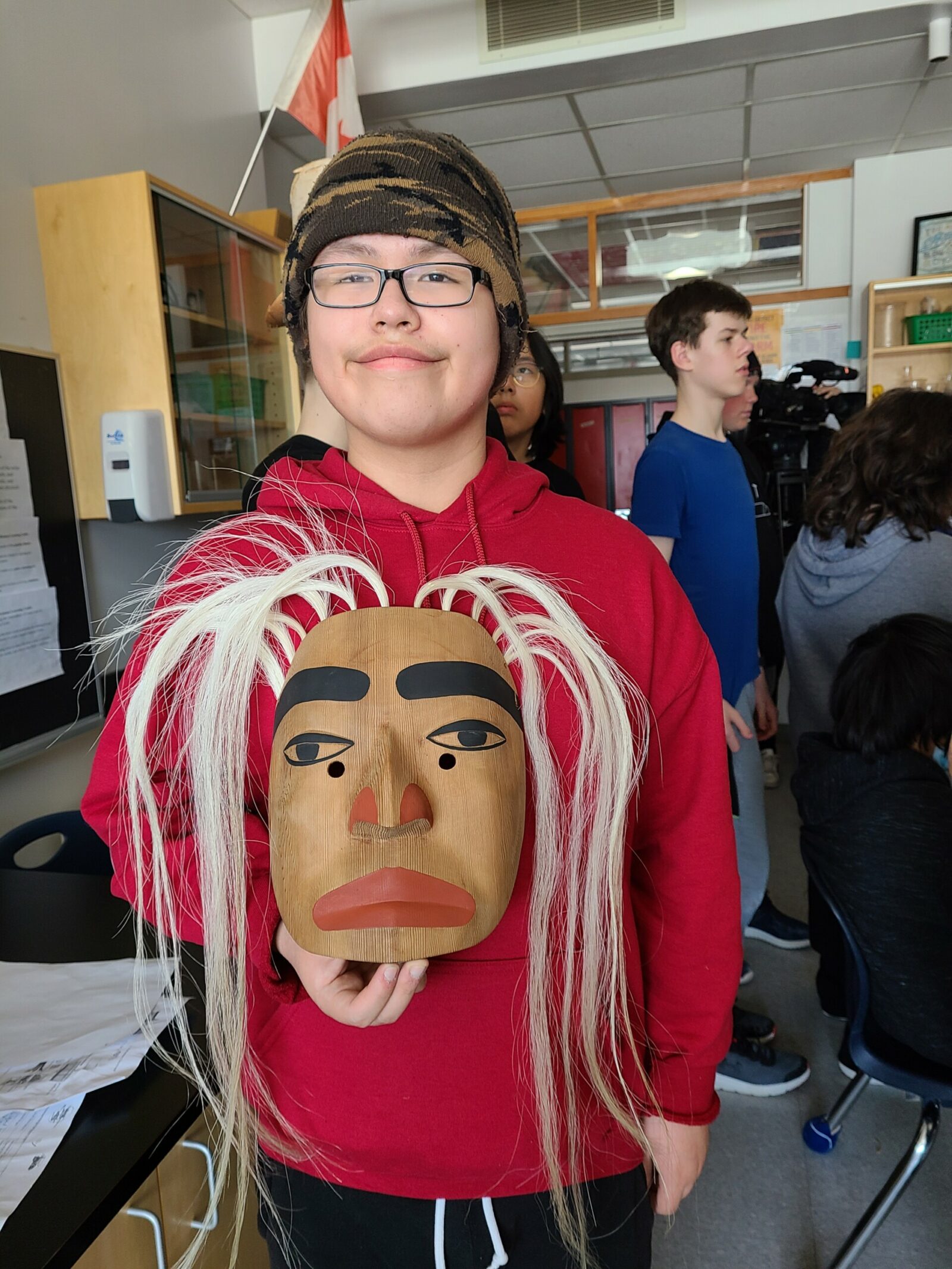Students Learn Cedar Wood Carving From Expert Artist



Coast Salish artist George Price greeted Algonquin Avenue Public School today as intermediate students hosted the acclaimed wood carver in a hands-on training session. George Price is well-known in Thunder Bay for his expert cedar mask and pole carving skills and his work on the spruce tree architecture of the Gathering Circle at Thunder Bay’s waterfront. He brought those skills, and his knowledge of Indigenous culture and tradition, to the classroom and engaged the students in cedar plank splitting and rope making. Cedar ropes are often used in mask making and are a popular feature in Indigenous wood works. The fine strands of flexible wood are weaved together and are typically used to outline the external border of the mask, adding texture and dimension to the work of art.
In the classroom, George Price taught the children how to select the tools for the job and explained the difference between the length, curve, and hook of carving blades. He demonstrated various techniques and mentioned that the use of western red cedar is the wood of choice in western provinces for wood-based art and other uses. He explained that in Northwestern Ontario, historically, Ojibwe people would use northern white cedar to make the floorboards of canoes by splitting the wood into long thin planks using special tools. Students quickly accepted the opportunity of having a hands-on experience and tried their hand at splitting northern white cedar wood planks using traditional tools, as well as carving the planks to produce thin ribbons.
“In Northwestern Ontario, birch and cedar were combined and used for wigwams and baskets. Both types of wood were so important to survival. Black ash was generally used to make baskets and snowshoes,” said Price.
Darren Lentz, principal of Algonquin Avenue Public School, said part of the Arts curriculum and part of the school’s improvement goals is to bring a wide variety of artists and cultural experiences to the students.
“When there are hands-on opportunities and students are having experiential learning opportunities, we notice that students are more engaged. When they bring their experiences back to the classroom and they read or write about it, they are that much more engaged and we get that much more out of them,” said Mr. Lentz.
Lakehead Public Schools is grateful to have the opportunity to open its doors to members of the community and experts from across Canada with strong knowledge of cultural traditions that complement the curriculum.

